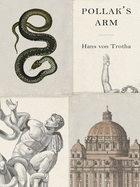
At the sight of the Western Wall in Jerusalem, antiquities expert Ludwig Pollak is moved to tears. He explains, "I thought about grandeur, about ascendency and downfall, about historic justice and the wrongs we endure, about the passage of time, old hopes and fulfillment deferred." It is no exaggeration to suggest that Hans von Trotha's Pollak's Arm, translated from the German by Elisabeth Lauffer, will engage similar heights and depths as it reckons with the consequences of power and the conflicting obligations of artists, writers and historians.
It is 1943, and Vatican officials have sent a representative (known only as "K.") to bring Pollak and his family to safety under papal protection after receiving word of the Nazi plan to apprehend all Jews in Rome the following day. K. attempts to convince Pollak to take refuge at the Vatican, but Pollak will not be hurried, insisting that his stories must first be told. K., along with readers, begins to realize that Pollak's reluctance to leave is more complicated and more urgent than expected. Upon his return, K. makes his report to the Monsignor, carefully retelling all of Pollak's stories and granting readers access to Pollak's emotion at the Western Wall, his work with financier J.P. Morgan and his discovery and recognition of the right arm of the sculpture of Laocoön. Pollak's Arm is a deceptive 138 pages, possible to read in one sitting but, once read, impossible to stop thinking about. --Sara Beth West, freelance reviewer and librarian

